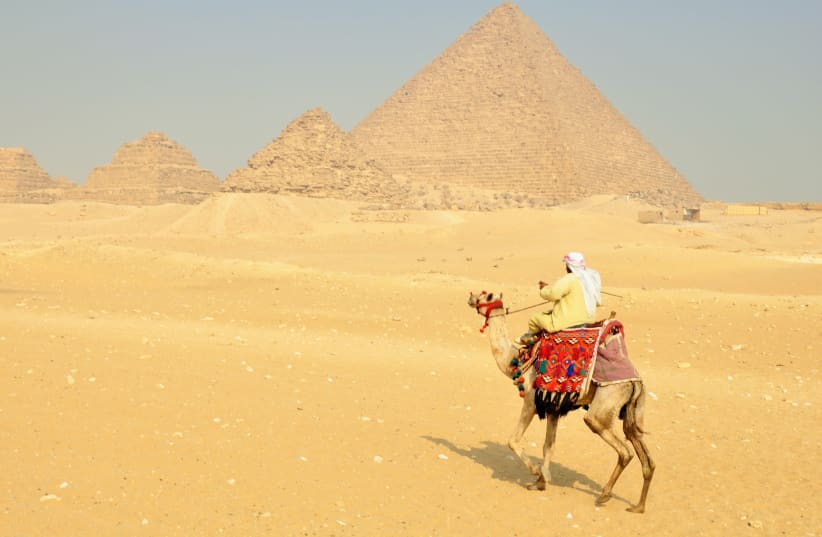First Passover
A busy schedule of events occurred in the lead-up to the first anniversary of the Exodus: the completion of the tabernacle, God filling it through the cloud, the 12-day inauguration festivities, the tragic death of Aharon’s two sons, and on the 14th day of the month at dusk, the first Passover!
We know how it feels to celebrate the 3,500-ish Passover. One can only imagine what it felt like for the first time. Not only were they celebrating the Exodus from Egypt “back then” (a year prior), but they were also celebrating the establishment of a new anchor of Judaism: the tabernacle, which later became the Temple. A month after the first Passover, the nation, strengthened by those monumental events, began its short journey home toward the Promised Land.
That journey, however, lasted longer than expected. The enslaving Egyptian mindset was evidently still prevalent in spite of the above events, and was on high display during the 12-spies affair. A physical exodus from Egypt was evidently insufficient. Hence, to get rid of the reproach of Egypt, God resorted to the extreme measure of a generational replacement, through 40 years of wandering in the desert – what Theodor Herzl called “education through migration”
First Passover in the Promised Land
The new generation arrived in the Promised Land right before Passover of Year 40 and was indeed ready. After crossing the Jordan, they parked next to Jericho, which was under a seemingly irrational self-imposed siege. (Could the fear have been caused by a pandemic described earlier? See box below).
Like the first Passover celebration 40 years prior, which was done after the inauguration of the tabernacle, this one too was done right after a monumental event – a communal brit mila (covenant of circumcision). The generation that left Egypt was circumcised, but they died in the desert. The new generation was not. Hence the nation’s entire male population was circumcised within days (except Joshua and Caleb, who had been circumcised in Egypt). The astonishing mass-circumcision operation was the ultimate expression of “getting back to life,” as explained: “And the Lord said unto Joshua: ‘This day have I rolled away the reproach of Egypt from off you.’”
Having been purified from Egypt, the nation was ready to celebrate the first Passover in the Promised Land, in Gilgal. This was followed the next day by an even higher level of emancipation: the manna welfare program that was provided by God during 40 years in the desert ended, and instead the nation became self-sufficient, consuming the produce of its land.
First Passover under Haman’s edict
Centuries later, in Persia, during the first days of Passover, the nation reached another level of self-sufficiency. Haman had been hanged, but his genocide plan scheduled for 11 months later, remained in effect. On that Passover, Jewish emancipation was radically expanded: from begging the king to reverse Haman’s edict (which could not be done), to the king giving instead a mandate to the Hebrews to defend themselves by themselves.
Some 25 centuries later, Herzl continued this pattern of emancipation – he rebelled against the Jewish establishment’s prevailing mantra of philanthropy-based Judaism, and instead planted the seeds for a Jewish transformation that would be based on self-sufficiency. His efforts led to another first Passover 70 years later.
First Passover in the re-united Promised Land
In June 1967, centuries after being expelled from their land, the Jews returned to Judea and Samaria, the land where Joshua held that first Passover and where much of the biblical Jewish civilization thrived.
In April 1968, a hundred or so Jews rented a hotel in Hebron to celebrate that first Passover in the reunited Promised Land. Supported by local Hebron Arabs as well as Jews from the Left and Right alike, this became the scion of today’s settlement movement.
Like the first Passover ever – and the first one in the Promised Land 40 years later – this one too came right after a monumental event: returning to Jerusalem, Hebron and to the biblical heartland. That Passover too symbolizes a new level of self-sufficiency, but this time, in line with Herzl’s vision that the nations be blessed by our liberty, it was not just for the benefit of the Jews.
Herzl understood that the European occupation of mindsets is debilitating, and therefore in order to develop we need “some rest from Europe, its wars and social complications.”
Europe today remains an occupier of the Palestinian mindset. It has created debilitating dependencies, mostly through an unelected regime that is accountable to its European funders rather than to Palestinian Arabs, and hence a narrative of victimhood and conflict-perpetuation is forced on Palestinians from the outside. Paradoxically, the settlement movement that started that Passover, represents an outlet for Palestinian emancipation from the reproach of Europe, providing a path to self-sufficiency through the start-up nation that flourishes in the settlement next door.
One of those 1968 Passover participants, Elyakim Haetzni, an early leader of the settlement movement and advocate for coexistence, described the enslaved reality forced through philanthropy-based nationalism: “The conflict is [therefore] to Palestinians what oil is to the Saudis.”
First Passover after COVID
Some 73 years later, Passover of 2021 in the Jewish state that Herzl envisioned, also came right after a monumental event: a rapid vaccination operation, which, just like in that Passover by Jericho, allowed Israelis to get back to life. Our upward journey toward expanded emancipation continues.
The writer is the author of the upcoming book Judaism 3.0. For details: Judaism-Zionism.com; Comments@Judaism-Zionism.com. For his geopolitical articles: EuropeAndJerusalem.com. For his commentaries on the weekly Torah portion: ParashaAndHerzl.com
